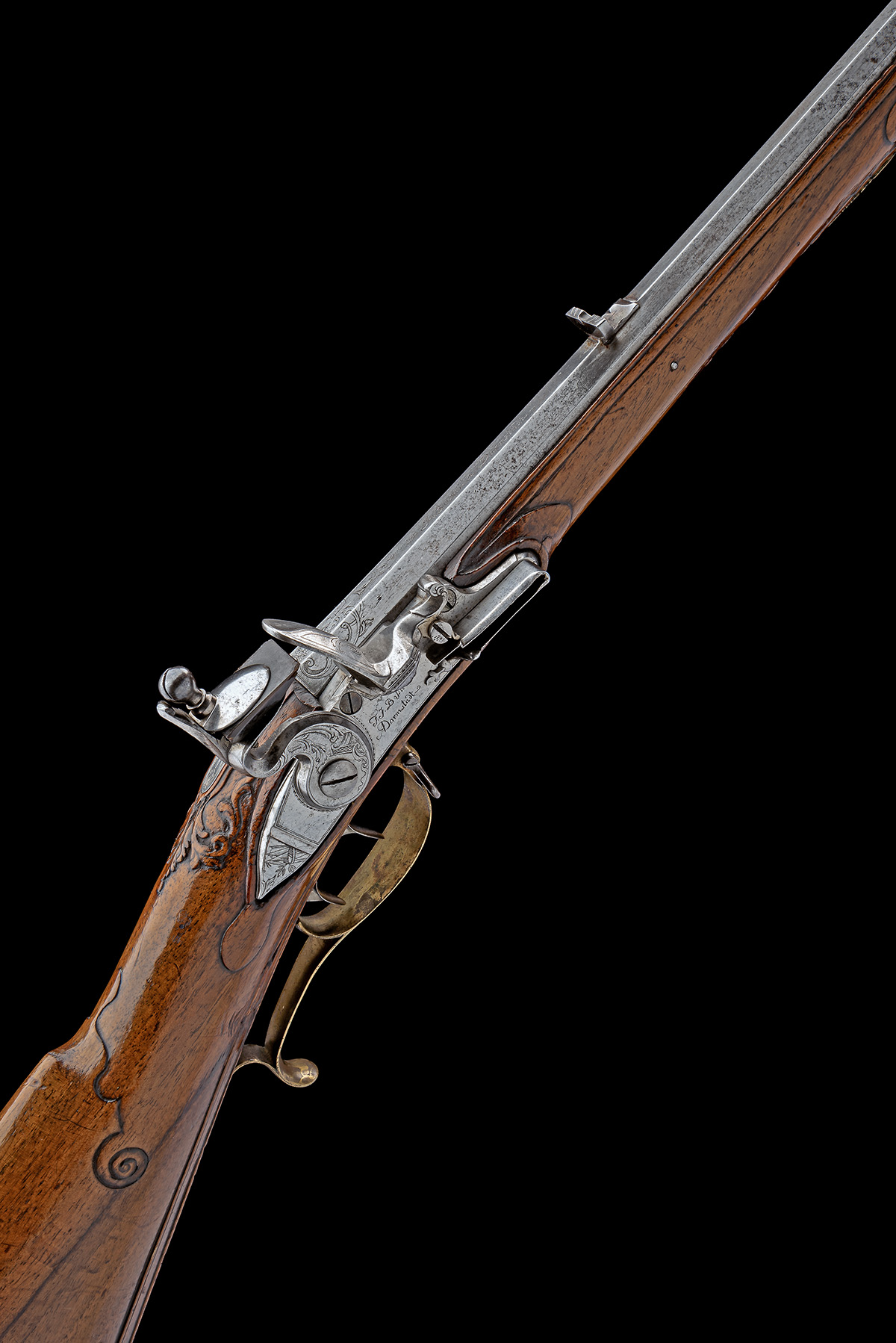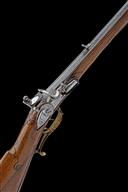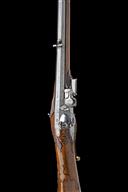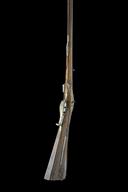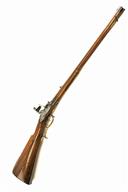Product Details
* F.J. BOSSLER, DARMSTADT, GERMANY,
A RARE 32-BORE SPORTING AIRGUN WITH CONCEALED STOCK RESERVOIR, no visible serial number,
circa 1750, with in the white slightly swamped 28 1/2in. smoothbore barrel, the top-flat signed 'F.J. BOSLER A DARMSTADT' (sic), dove-tailed brass blade fore-sight, standing notch rear-sight, scroll and arabesque engraving at breech (rubbed), slightly raised top-tang engraved with a mask and borders, flat bevel-edged lock in the form of a flintlock with moulded and stepped pointed tail and signed 'F.J BOSSLER, DARMSTADT' below the border engraved lozenge pan, dummy touch-hole, unbridled frizzen, swan-necked cocking piece, walnut full-stock with carved borders around the furniture and alongside the ramrod channel, the oversized butt concealing the reservoir, raised and carved cheek-piece, brass engraved mounts (strong traces of gilding), the aperture for a pump hidden by a sprung trapdoor opened via a concealed button in the heel-plate, double set triggers, side safe mounted on the engraved sideplate, horn fore-end tip and replacement ramrod, iron stirrup swivels for sling
Provenance: Airguns by the Bosslers appear in a number of collections including that of our own Royal Family. Johann Peter Bossler was born in 1689, in Zella, Thuringia. By 1718 he was court gunmaker and made many extremely fine firearms but specialised in air weapons. When he passed away in 1742, his son Friedrich Jacob Bossler took over his title and continued to specialise in airguns, making pieces for Ludwig VIII, who gained himself a place in history for being an airgun afficionado. Part of his legacy is a journal, held in the Schlossmuseum, Darmstadt titled 'Specification of all the Curious Shots Which His Serene Highness the Reigning Landgrave Ludwig VIII has Fired Since 1742 in the Wood of Allerheiligen, as well as With Airgun as in Other Ways, Which Here is Collected With Great Care'. The journal comprises of several hundred pages, each picturing a particular type of game such as a stag or boar and is accompanied by a poem describing when and how the Landgrave killed the game in question. The majority of the illustrations were painted by Adam Georg Eger, who between the years 1748 until Ludwig VIII's death in 1768 was the court hunt-painter or 'Hofjagdmaler'. The pages concerning kills with airguns regularly list the distance involved at over 150 paces, a true testament to the efficiency of these early airguns
* Please note this item is subject to 5% VAT on the hammer price (UK Buyers only).
Please click HERE to view Terms & Conditions. Please note all Lots are listed in accordance with UK Law, for overseas buyers, please ensure you are familiar with your relevant local firearms and customs regulations before bidding.
Estimate £2,500-3,500
Pre-1939

